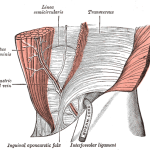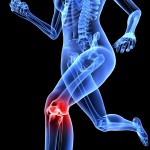Introduction
In the previous article (which you can read here), we discussed the MACI procedure including a rough guideline for physiotherapy rehabilitation following the surgery. This article will discuss the mid-term outcomes of the surgery, including that which we are all interested in; return to play outcomes.
Why Consider MACI Procedure?
As stated in the previous article, a number of cartilage repair techniques have been employed to address cartilage defects, including;
- Debridement/chondroplasty
- Osteochondral autologous grafts
- Microfracture
- Subchondral drilling
- Abrasion arthroplasty
However, these result in healing via the formation of fibrocartilage, which is a biomechanically inferior tissue. Thus, after these procedures the injured joint will commonly progress rapidly to osteoarthritis (Peterson, 1996). This is clearly not an ideal outcome for the athlete, and therefore there has been increased use of the MACI procedure for large chondral defects of the knee. But, what are the outcomes?
The Mid-Term Outcomes Following the MACI Procedure
Ebert et al (2011) followed 35 patients (38 knees, 46 grafts) through a complete 5-year postoperative follow-up. All surgery was performed by the same surgeon within the same hospital, and the patients underwent a structured, supervised outpatient rehabilitation program over a 12-week period, and further activity guidelines and advice were provided up until 12 months after surgery. This was individualised and tailored to each patient and presentation, however you may suggest this was a bit short?
The main outcomes assessed by the authors were:
- Knee injury and Osteoarthritis Outcome Score (KOOS): to assess knee pain, symptoms, activities of daily living (ADL), sport and recreation, and knee related quality of life
- Short Form Health Survey (SF-36)
- 6-minute walk test
- Maximal active knee flexion and extension ROM
Pain and Symptoms
The graph below shows the progression of pain and symptoms of the patients following their MACI procedure. The MACI procedure seems quite effective at reducing pain and symptoms, as at the 5 year evaluation 98% were satisfied with the ability of MACI to relieve their knee pain (Ebert et al, 2011).
Function
The MACI procedure has shown to improve knee function, including the ability of the patient to perform ADL’s. Basad et al. (2010) showed that patients who underwent MACI improved from their baseline Lysholm Knee Score of 52 to 95 at 12 months, and this was maintained at 2 years. Ebert et al. (2011) reported that at the 5 year evaluation 86% were satisfied with the improvement in their ability to undertake daily activities.
RTP Following MACI Procedures
Now this is the big one, and of course the one that we are all interested in. If we look at the post-operative protocols and suggestions (Reinold et al., 2006; Hambly et al., 2006), they will suggest that RTP is appropriate in the following time-frames:
- 6 months for low impact sports (swimming, cycling etc)
- 9 months for moderate impact sports (jogging, running, aerobics)
- 12 – 18 months for high impact sports (football, tennis, basketball)
However, we are interested in how many athletes that receive the MACI procedure actually RTP, and also at what level of competition (e.g. elite level?). Ebert et al (2011) offered the below results (see graph) and stated that 73% of patients were satisfied with their ability to participate in sport 5 years after MACI. Whilst it is challenging to find return to play results following the MACI procedure, Mithofer et al (2005) reported on the return to play outcomes in athletes following the ACI procedure. They found that only 33% of athletes (both elite and recreational) returned to soccer, at an average of 18.1 months. Whilst this is not the MACI procedure, it does highlight some concerns…
It is interesting to note the massive drop at 3 months, which is obviously related to the rehabilitation restrictions at this time.
Comparison of Clinical Outcomes
This is a comparison of the clinical outcomes over the study period.
MRI/Radiographic Appearance
The MRI based outcomes show promising results in the mid-term (Ebert et al., 2011). The study assessed the following outcomes on MRI:
- Signal Intensity
- Graft Infill
- Border Integration
- Surface Contour
- Structure
- Subchondral Lamina
- Subchondral Bone
- Effusion
The MRI studies demonstrated that there was good graft infill and border integration of the MACI graft into the surrounding cartilage. This has been confirmed by the work of Enea and colleagues (2011) who performed second look arthroscopies and took core biopsies following 33 MACI procedures. Below is a graph of the overall or composite score of the MRI outcomes over the study period. Whilst significant improvement is seen up to 2 years, there is a decline in MRI appearance at 5 years, suggesting a degradation of the graft at 5 years. Fortunately, this does not correlate with a clinical deterioration (as shown by improvements above).
What Are Your Experiences?
I would like to know what your experiences are when rehabilitating knees post MACI procedures. Do you think that it provides good outcomes for the patient/athlete? Is the rehabilitation too tedious? Be sure to let me know in the comments or catch me on Facebook or Twitter
If you require any sports physiotherapy products be sure check out PhysioSupplies (AUS) or MedEx Supply (Worldwide)
References
Basad E, Ishaque B, Bachmann G, Sturz H, Steinmeyer J. Matrix-induced autologous chondrocyte implantation versus microfracture in the treatment of cartilage defects of the knee: a 2-year randomised study. Knee Surg Sports Traumatol Arthrosc (2010) 18:519–527
Ebert JR, Robertson WB, Woodhouse J, Fallon M , Zheng MH, Ackland T, Wood DJ. Clinical and magnetic resonance imaging–based outcomes to 5 years after matrix-induced autologous chondrocyte implantation to address articular cartilage defects in the knee. Am J Sports Med 2011;39:753-763
Enea D, Cecconi S, Busilacchi A, Manzinotti S, Gesuita R, Gigante A. Matrix-induced autologous chondrocyte implantation (MACI) in the knee. Knee Injury, Sports Traumatology, Arthroscopy. 2011 DOI: 10.1007/s00167-011-1639-1
Hambly K, Bobic V, Wondrasch B, Van Assche and Marolvits S. Autologous Chondrocyte Implantation Postoperative Care and Rehabilitation. American Journal of Sports Medicine 2006;34(6):1020-1038
Mithofer K, Peterson L, Mandelbaum BR, Minas T. Articular cartilage repair in soccer players with 54 autologous chondrocyte transplantation: functional outcome and return to competition. Am J Sports Med. 2005;33:1639-1646.
Peterson L. Articular cartilage injuries treated with autologous chondrocyte transplantation in the human knee. Acta Orthop Belg. 1996;62(suppl 1):196-200.
Reinold MM, Wilk KE, Macrina LC, Dugas JR, Cain EL. Current Concepts in the Rehabilitation Following Articular Cartilage Repair Procedures in the Knee. J Orthop Sports Phys Ther 2006;36(10):774-794.
Related Posts














